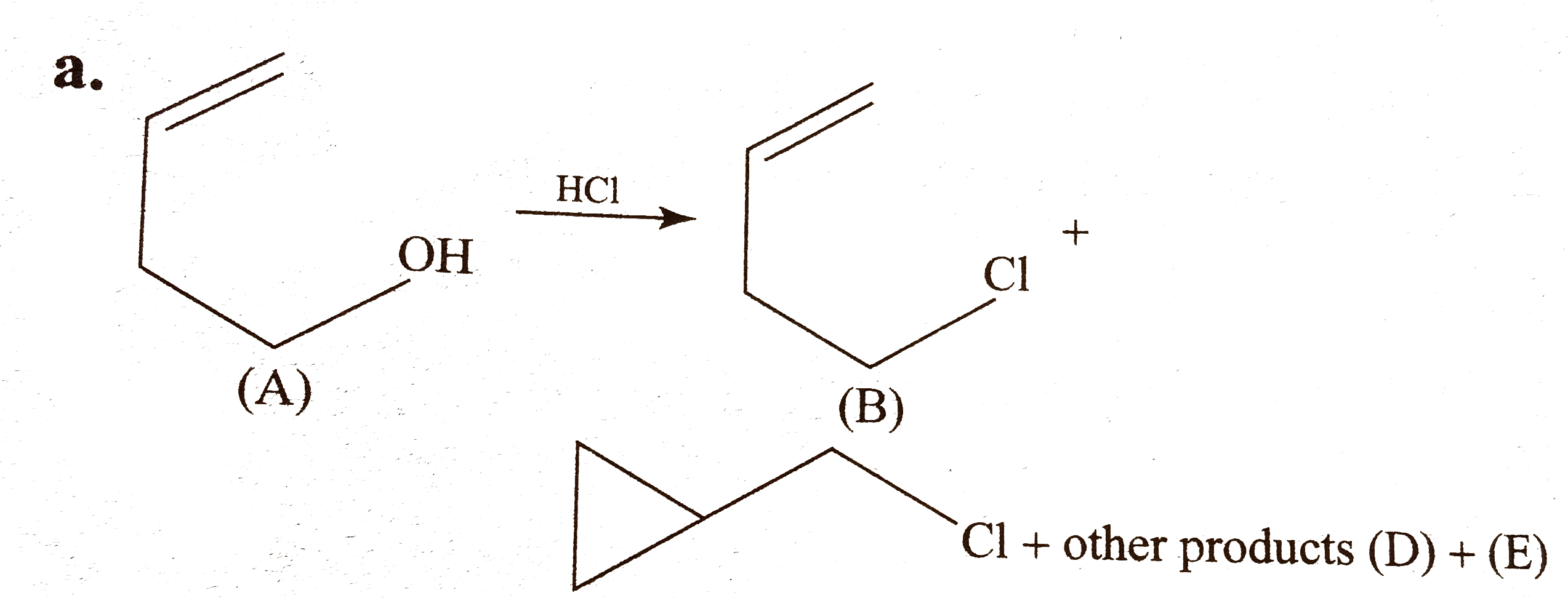Explain intermediate compound formation theory of catalysis with an example.
The intermediate compound formation theory:
A catalyst acts by providing a new path with low energy of activation. In homogeneous catalysed reactions a catalyst may combine with one or more reactant to form an intermediate which reacts with other reactant or decompose to give products and the catalyst is regenerated.
Consider the reactions:
A+B→AB (1)
A+C→AC ( intermediate ) (2)
C is the catalyst
AC+B→AB+C (3)
Activation energies for the reactions (2) and (3) are lowered compared to that of (1). Hence the formation and decomposition of the intermediate accelerate the rate of the reaction. Example: The mechanism of Fridel crafts reaction is given below
C6H5+CH3ClanhydrousAlCl3−−−−−−−−−→C6H5CH3+HCl
The action of catalyst is explained as follows
CH3Cl+AlCl3→[CH3]+ It is an intermediate [AlCl4]−
C6H6+[CH3]+[AlCl4]−→C6H5CH3+AlCl3+HCl
This theroy describes ,
(i) The specificity of a catalyst .
(ii) The increase in the rate of the reaction wiht increase in the concentration of a catalyst .
Limitations
(i) The intermediate compound theory fails to explain the action of catalytic poison and activators (promoters).
(ii) This theory is unable to explain the mechanism of heterogeneous catalysed reactions.
Related Playlists
- BOOK - FULL MARKSCHAPTER - SURFACE CHEMISTRYEXERCISE - ADDITIONAL QUESTIONS ( Choose the correct answer and write it . )150videos
SURFACE CHEMISTRY
- BOOK - FULL MARKSCHAPTER - SURFACE CHEMISTRYEXERCISE - ADDITIONAL QUESTIONS ( Fill in the blanks )77videos
SURFACE CHEMISTRY
- BOOK - FULL MARKSCHAPTER - SURFACE CHEMISTRYEXERCISE - ADDITIONAL QUESTIONS (5 Marks questions)12videos
SURFACE CHEMISTRY
- BOOK - FULL MARKSCHAPTER - SOLID STATEEXERCISE - Additional Questions 5 Mark Questions5videos
SOLID STATE
- BOOK - FULL MARKSCHAPTER - TRANSITION AND INNER TRANSITION ELEMENTSEXERCISE - Additional Questions (X. 5 Mark Questions.)4videos
TRANSITION AND INNER TRANSITION ELEMENTS
Similar Questions
Explain the adsorption theory of catalysis with one example.
View SolutionExplain auto catalysis with one example.
View SolutionIntermediate compound formation theory explans…………………. Catalysis.
View SolutionFill in the blanks by choosing the appropriate word/words from those given in the brackets.(dialysis, peptization , dispersed phase , dispersion medium , electrophoresis , heterogeneous, coagulation , coagulates, emulsion , gel , homogeneous , Tyndall effect , protective colloids , electrodialysis)
Intermediate compound formation theory explains ......... catalysis.View SolutionCharacteristics OF Catalyst, Theory OF Catalysis || Intermediate Compound Formation Theory || Absorption Theory || Shape Selective Catalysis ||Zeolites|| Enzyme Catalysis
View SolutionModern theory of heterogeneous catalysis is
View SolutionAdsorption Theory Of Heterogeneous Catalysis
View SolutionExplain briefly the formation of the product giving structures of the intermediates.
 View Solution
View SolutionExplain briefly the formation of the product giving structures of the intermediates.
 View Solution
View SolutionExplain the formation of the products giving the structures of the intermediates.
a.
b. View Solution
View Solution

